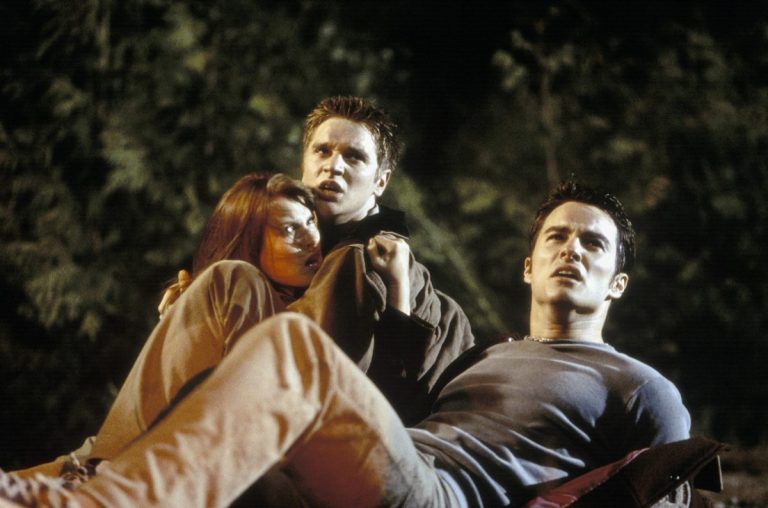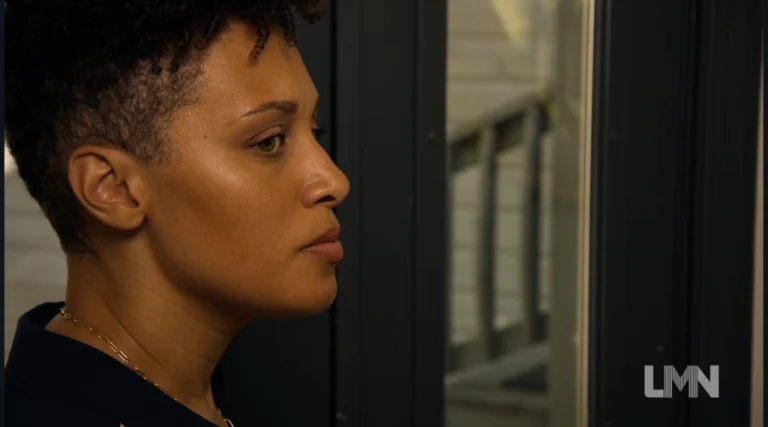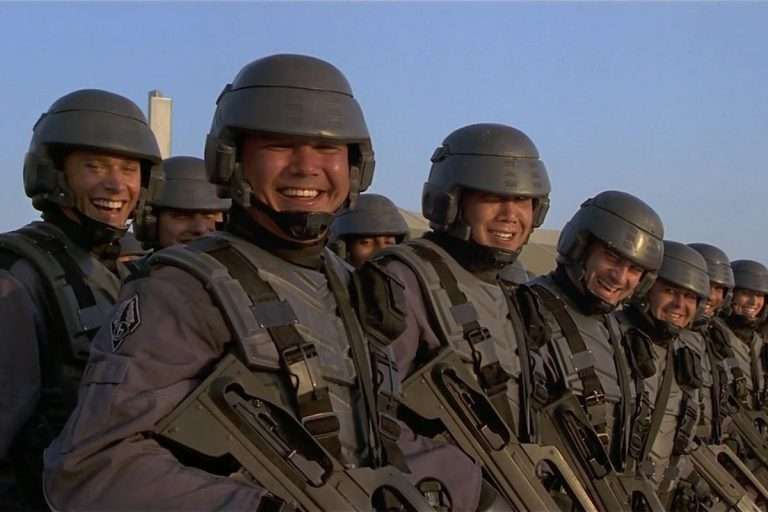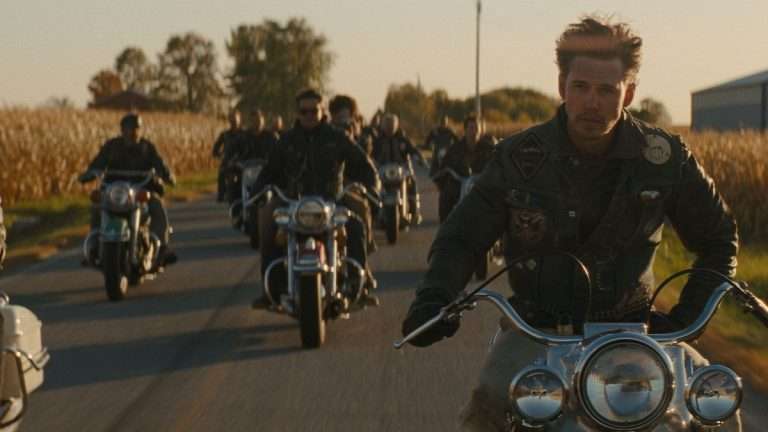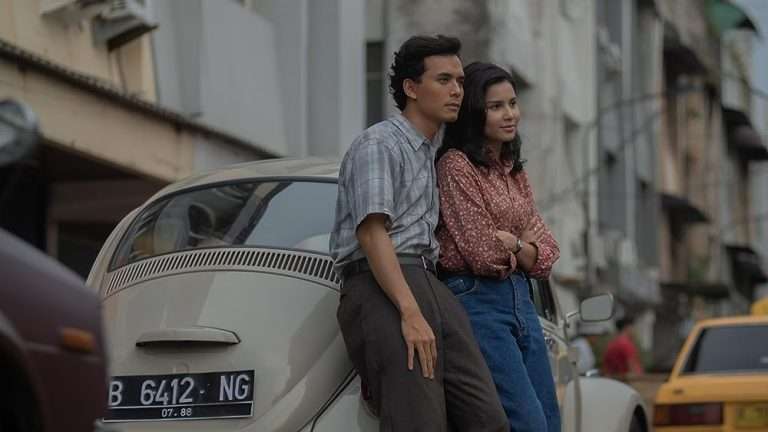“Kill Me Again” (2025), directed by Keith Jardine, is a rare kind of time-loop thriller—one that turns the genre inside out. Instead of centering on a victim or hero desperately trying to break free, the film traps its audience inside the fractured mind of a killer who cannot escape. What begins as a grim neo-noir slasher set in a dusty American diner slowly mutates into a psychological science-fiction puzzle about guilt, punishment, and control.
With Brendan Fehr inhabiting the role of Charlie “The Midnight Mangler,” the film unfolds like “Groundhog Day” rewritten by a neuroscientist studying the architecture of human morality. Jardine doesn’t deal in cheap twists. Instead, he lets us settle into what seems like a straightforward murder spree—only to let the loops restart, each reset peeling away another layer of Charlie’s reality. Under the diner’s sickly neon glow, time itself begins to decay, and so does the killer’s sense of self.
Spoilers Ahead
Kill Me Again (2025) Plot Summary and Synopsis:
Charlie enters a diner late at night, moments after the news reports two brutal killings, his own handiwork. He’s relaxed, confident, and bored, just another predator blending in. The diner’s patrons seem ordinary: Sam and Gary, a pair of drunk buddies; Tyler and Gwen, an adulterous couple whispering about their affair; David, a quiet loner in the back booth; and a Russian fry cook, silent and imposing behind the counter. The waitress, Anna, is the only one who shows him warmth, even if it’s just the kind that comes with good customer service. But when Anna ends her shift, Charlie follows her out. What starts as casual talk turns menacing soon.
Anna tries to keep calm, even humoring him when he offers her a smoke. But the moment she hesitates, his control issues explode. He forces her into his truck, mocks her pleas about her daughter, and kills her. Then, everything resets. Anna’s alive, the TV’s playing the same news, and Charlie’s steak hasn’t even been served yet. The loops continue, each one exposing another layer of Charlie’s unraveling sanity. He kills Anna again, then the others. He shoots, stabs, burns, and drives away, but the diner reappears every time. Even when Sam fights back and shoots him, Charlie wakes up again at the same booth, bloodless and furious. Every new loop forces Charlie to face the same people, same food, same fake smiles, and the growing suspicion that this isn’t reality anymore.
Why Is Charlie Stuck in the Loop?
At first glance, Charlie’s situation looks supernatural, a purgatory for his sins. But Jardine’s direction keeps it ambiguous. The repetition feels mechanical, not spiritual. The first clue comes when Charlie notices minor inconsistencies, such as his wounds disappearing instantly or no one reacting differently, no matter what he does. The loop functions like a simulation, but its purpose isn’t immediately clear. Charlie believes he’s in control because he can kill and manipulate everyone. But the longer the loop goes on, the less power he has. It’s a punishment built around repetition: every act of violence resets, erasing his dominance and amplifying his frustration.
Charlie’s ‘punishment loop’ mirrors his psychology. He thrives on power, on being feared, on owning every outcome. The diner traps him in the one situation he can’t dominate, one where his actions mean nothing. His victims resurrect, his control dissolves, and his identity, the Mangler, starts to erode. By the midsection, Charlie’s delusion cracks. He screams at the TV, interrogates Anna, and even begs to be killed for real. But there’s no exit, no consequence, only recurrence. His mind begins to rot from the inside out, and the loop becomes a mirror of that rot, a feedback system of his crimes replaying until he breaks.
What “Kill Me Again” nails here is the idea that the time loop isn’t a random curse; it’s engineered. Someone wants Charlie to relive his crimes until he’s stripped of ego, pleasure, and sanity. What he doesn’t yet know is that the diner isn’t authentic; it’s a controlled psychological construct. But before we learn that, Jardine forces us to stay trapped with him, watching his descent inch by inch.
What Role Do the Diner’s Patrons Play in Charlie’s Punishment?
At first, the diner characters seem like background noise, types you’d find in any small-town pit stop. But as the loops progress, their behavior becomes suspiciously consistent. None of them changes, no matter what Charlie does. The couple keeps arguing about intimacy. Sam and Gary keep drinking and mocking the Mangler’s crimes. The fry cook keeps flipping steaks with military calm. And Anna keeps offering her tired but kind service. In psychological terms, each diner patron represents a reflection of Charlie’s impulses:
Sam embodies aggression, the kind of brute violence Charlie hides under his calm exterior. Gary mirrors submissiveness, the blind obedience Charlie expects from his victims. Tyler and Gwen reflect duplicity and lust, sins that parallel Charlie’s own manipulative seduction before each kill. The Fry Cook represents authority, someone who can’t be intimidated, a wall Charlie’s ego can’t penetrate. David, the quiet man, is judgment, the one who observes, not participates.
Together, they form the architecture of Charlie’s mind, his guilt, his rage, his fears, each one reappearing because he can’t escape himself. The more Charlie interacts with them, the more obvious it becomes that they’re not real people but constructs in a system testing him. Their repetition, monotone delivery, and lack of memory across loops are symptoms of simulation. When Charlie kills them, the system restarts. When he tries to talk, it still restarts. The diner becomes a mechanical moral cage, forcing him to confront that his every action is preprogrammed, and that his identity as a ‘free killer’ is a lie. By the time he begins to suspect manipulation, the audience starts to see the diner as both a literal space and a mental prison, a feedback loop fed by guilt and control.
Who is David, and Why Does the Fry Cook Keep Defeating Charlie?
Two characters consistently disrupt Charlie’s sense of dominance: David, the silent man at the corner booth, and the Fry Cook, who refuses to take orders. The Fry Cook’s defiance enrages Charlie more than anything else. His refusal to make breakfast at this hour becomes symbolic; rules exist that Charlie cannot break, no matter his violence. Each time Charlie attacks him, the cook defeats him effortlessly, never bleeding, never scared. Charlie eventually shoots him, cooks his own eggs, and eats them cold and alone.
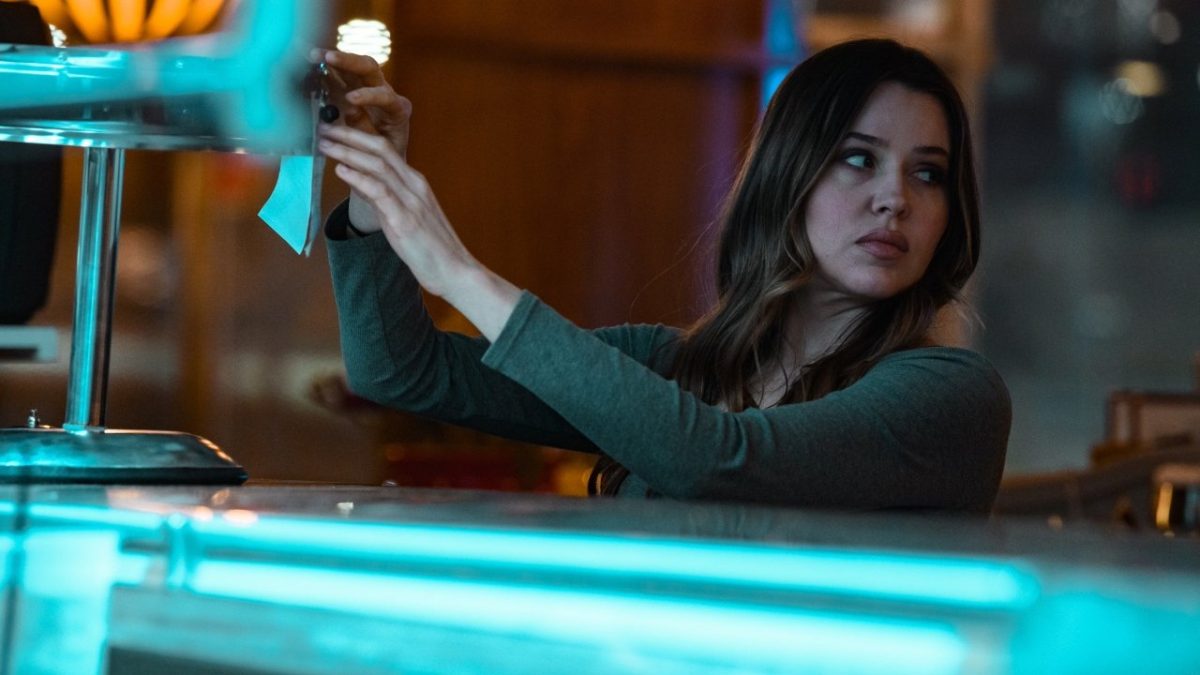
This sequence is more than physical frustration. It’s the first moment Charlie realizes he isn’t the apex predator anymore. The cook represents the immovable system, the unbreakable law that Charlie has always denied existed. David, meanwhile, plays the opposite role. He’s passive, analytical, and when he finally speaks, he acts like an interrogator. He mocks Charlie’s self-image as a ‘legendary’ killer and compares him to other serial killers who wouldn’t ‘whine like a child.’
It’s the moment the story shifts from horror to experiment. David knows more than Charlie, subtly hinting that he’s seen this all before. When Charlie accuses him of being an ‘agent’ or ‘God,’ David never confirms or denies. It’s as if he’s another subject who’s accepted his fate. By pairing David’s calm intellect with the Cook’s physical resistance, Jardine gives Charlie two immovable forces: one mental, one physical. They both exist to break his illusion of control from opposite ends, mind and body.
What Does the Priest Represent, and Why Does Charlie Fail at Redemption?
When a priest suddenly appears in one of the later loops, Charlie finally believes he’s being tested by something divine. The priest tells him that forgiveness and repentance are the key to freedom. At first, Charlie tries. He’s polite. He compliments Anna, tips her, thanks the nurses, and even gives moral advice to the cheating couple.
The diner feels lighter, and Anna responds warmly. It looks like redemption might be possible. But Charlie’s kindness isn’t genuine; it’s a performance. He’s not remorseful; he’s strategic, treating morality as another means to an end. The moment Anna grows close, he reverts to violence, stabbing her again. That single relapse is the turning point. It proves the loop isn’t about external salvation but inner change. Charlie’s instinct to kill is stronger than his will to reform. He doesn’t want forgiveness; he wants control. And that’s when the real world cracks open.
Kill Me Again (2025) Movie Ending Explained:
Is Charlie in a Simulation or a Personal Hell?
The final act pulls the rug out completely. Charlie wakes strapped to a chair in a sterile white room. His body is deteriorated, his eyes hollow. Standing before him are Dr. Lovato (the priest from the diner) and Dr. Beth Stephens, who reveal that Charlie has been part of an experimental rehabilitation program called Neuroscape. The premise is brutal but ingenious: using neural VR, the system traps convicted murderers inside simulations of their own crimes, forcing them to relive their guilt until they break psychologically or develop remorse.
In other words, the diner was never authentic. It is a lab construct designed to punish and reprogram his conscience. Every patron was a projection, every kill a controlled variable, and every reset a recalibration. Dr. Stephens explains that their research could ‘reform’ criminal minds and make them safe for reintegration into society. She presents this as progress. But it’s clear that Charlie isn’t healing; he’s being tortured. His sense of time and reality has disintegrated. Anna reappears in the real world, too, but as a psychiatrist. The doctors insist that she was never really in the loop, but Charlie recognizes her instantly. His mind refuses to separate the illusion from the truth. Whether she’s a therapist or the ghost of his victim, the effect is the same: she represents what he can’t undo.
In one of the film’s most disturbing moments, Dr. Stephens lies to Charlie, claiming he’s making progress and might avoid execution if he keeps cooperating. In reality, Neuroscape’s true purpose isn’t rehabilitation. Charlie and others like him are permanent test subjects for behavior control. As he’s dragged back to his cell, Charlie spots David again, now clearly another killer in the same program. The diner was never purgatory; it was a shared prison built by science, not God. The ending press conference seals the film’s moral tension. Dr. Stephens presents Neuroscape as a revolutionary success, while journalists question the ethics of ‘reforming’ minds through psychological torture. Her response, ‘They agreed to it’, shows the hypocrisy of consent under duress.
In the final moments, Charlie refuses to eat or sleep, terrified that he’ll return to the diner. But Anna sedates him anyway. The screen fades from the sterile hospital light to the diner’s neon glow. Anna asks, ‘What’ll it be tonight, hon?’ The loop restarts. Charlie isn’t trapped in a mystical curse but in a human-made purgatory that mirrors his own moral void. Neuroscape is a metaphor for how science can mimic divine punishment, and how conscience, when absent, can’t be restored by force. For Charlie, there is no redemption because there was never remorse. His punishment is perpetual awareness without control, memory without growth. Whether his prison is digital or metaphysical no longer matters. In “Kill Me Again,” death is never the end. And thus, Charlie’s is being kept alive forever.

